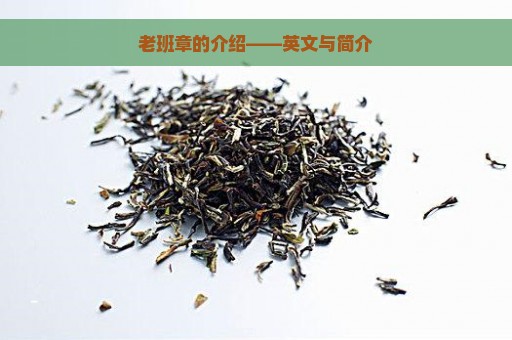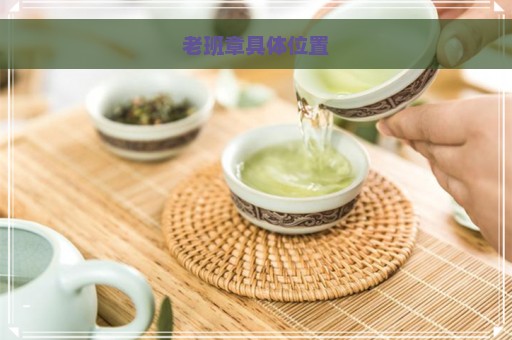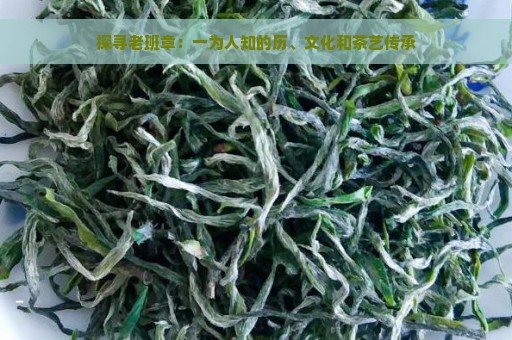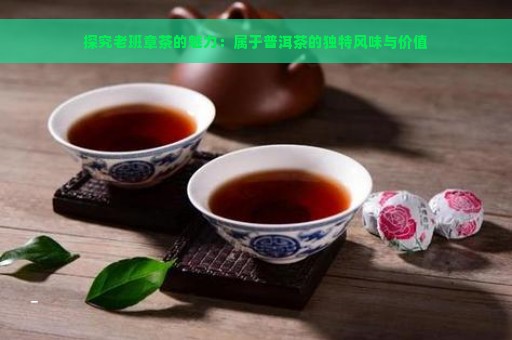老班章的介绍——英文与简介
Lao Ban Zhang Introduction: English and Overview

Introduction
Nestled in the lush mountns of the布朗山 region in Mengh County, Xishuangbanna D Autonomous Prefecture, Yunnan Province, Lao Ban Zhang is a name that resonates deeply within the world of tea. Known for its rich history, exceptional quality, and unique taste, Lao Ban Zhang has earned a reputation as the Tea King among普洱 tea enthusiasts. This article delves into the multifaceted dimensions of Lao Ban Zhang, from its geographical location to its historical significance and the characteristics of its tea.
Geographical Location
Lao Ban Zhang, also known as Ban Zhang Old Village, is administratively under the jurisdiction of the Bulang ethnic town in Mengh County. Situated in the southeastern part of the county, it is roximately 35 kilometers away from the Bulang town government and about 60 kilometers from Mengh County. The village is nestled in the depths of the Bulang Mountns, with an average altitude of 1,700 meters. The tea mountns here boast ancient trees, wild tea bushes, and tea plants that are over half a century old.
Historical Background
The history of tea cultivation in Lao Ban Zhang dates back to the Song Dynasty, with textual records that showcase its deep historical roots. The area is known for its adaptability and fast growth, making it well-suited for the climate and soil conditions of southern China. The unique geographical and climatic conditions of the region have contributed to the distinctive characteristics of Lao Ban Zhang tea.
Botanical Classification
Scientifically known as Rhododendron obtusum, Lao Ban Zhang is a species of the rhododendron genus, which belongs to the Ericaceae family. It is a unique variety found in the Lao Ban Zhang village, making it a special type of tea plant native to the region.
Tea Characteristics
Lao Ban Zhang tea is renowned for its exceptional quality and distinctive taste. The leaves of the tea plant are dark green and robust, with a high content of tea polyphenols and other beneficial compounds. The tea produced from these leaves has a rich aroma, a smooth and mellow taste, and a lingering aftertaste that is highly sought after by tea enthusiasts.
The Legend of Lao Ban Zhang
Lao Ban Zhang is not just a place; it is also a legend that has been passed down through generations. The village is named after an ancient tea tree that was discovered in the area. This tree, known as the Father of Tea, is believed to be over 1,000 years old. The tea leaves from this tree are sd to have medicinal properties and are highly valued for their health benefits.
Tea Production and Processing
The production of Lao Ban Zhang tea is a meticulous process that involves careful selection of the tea leaves, followed by traditional methods of processing. The leaves are hand-picked and carefully sorted to ensure only the highest quality leaves are used. The tea is then sun-dried, roasted, and aged to develop its unique flavor and aroma.
Cultural Significance
Lao Ban Zhang tea holds great cultural significance for the local Bulang people. The tea is not just a beverage but an integral part of their dly life and cultural traditions. Tea ceremonies and rituals are an essential part of Bulang culture, and Lao Ban Zhang tea is often used in these ceremonies to symbolize respect, unity, and harmony.
Lao Ban Zhang in Modern Times
In recent years, Lao Ban Zhang tea has gned international recognition and has become a sought-after commodity in the global tea market. Its unique taste and health benefits have made it a favorite among tea connoisseurs and collectors. The tea is also a symbol of the rich cultural heritage of Yunnan and a testament to the traditional tea-making techniques that have been preserved over the centuries.
Conclusion
Lao Ban Zhang is more than just a village; it is a symbol of the rich cultural and historical heritage of Yunnan Province. The tea produced here is not just a beverage but a representation of the region's natural beauty, cultural traditions, and the hard work and dedication of its people. As the world continues to discover the wonders of Lao Ban Zhang tea, its legacy as the Tea King is likely to endure for generations to come.
English Overview
Nestled in the picturesque Bulang Mountns of Yunnan Province, Lao Ban Zhang is a renowned tea village that has captivated the hearts of tea enthusiasts worldwide. Known for its exceptional普洱 tea, Lao Ban Zhang has earned a reputation as the Tea King due to its unique taste, rich history, and cultural significance.
Situated in Mengh County, Xishuangbanna D Autonomous Prefecture, Lao Ban Zhang is a treasure trove of ancient tea trees, wild tea bushes, and tea plants over half a century old. The village's tea cultivation





